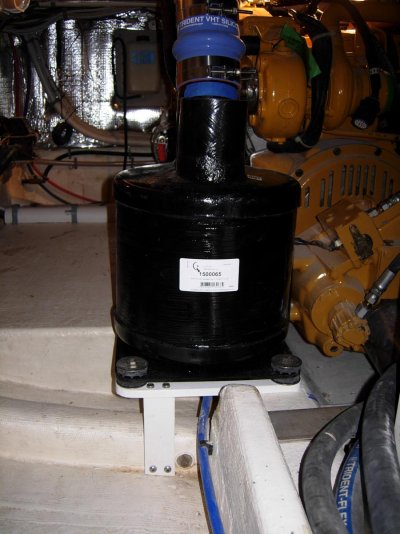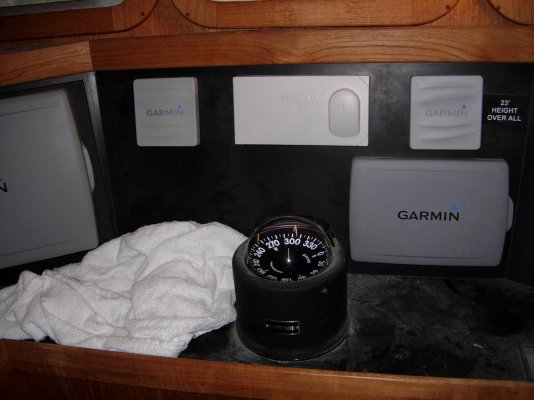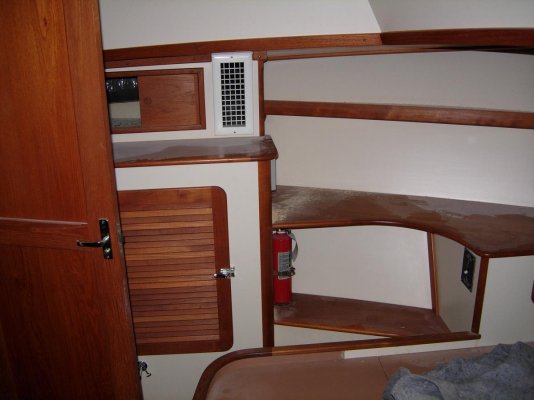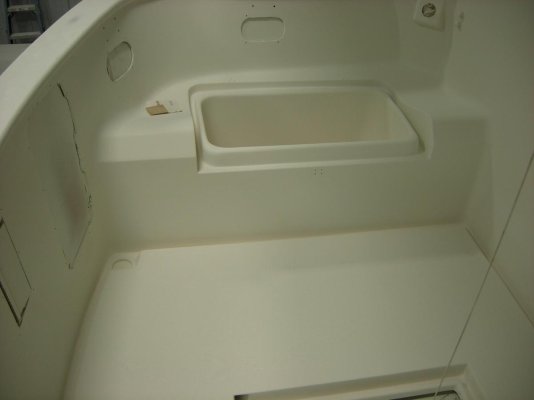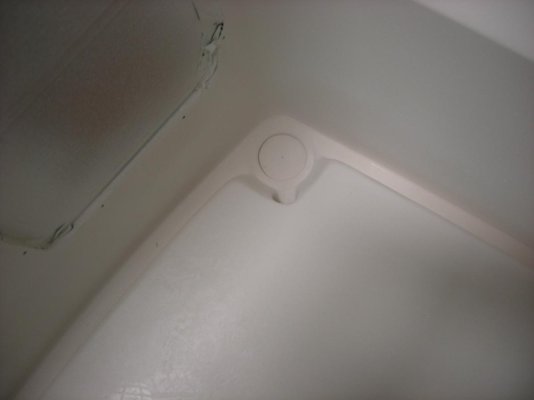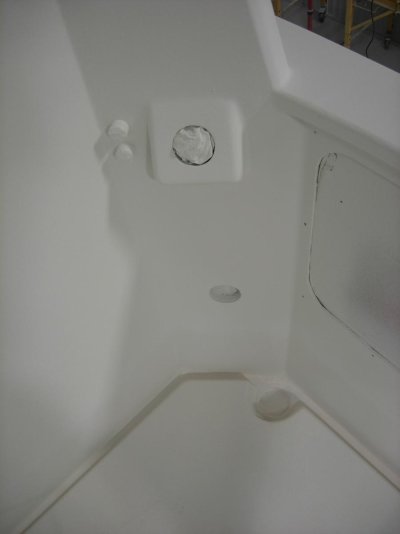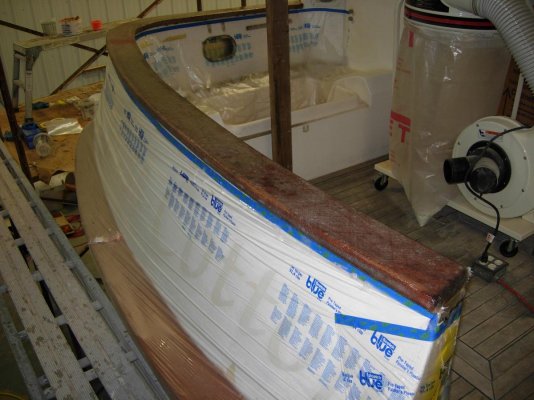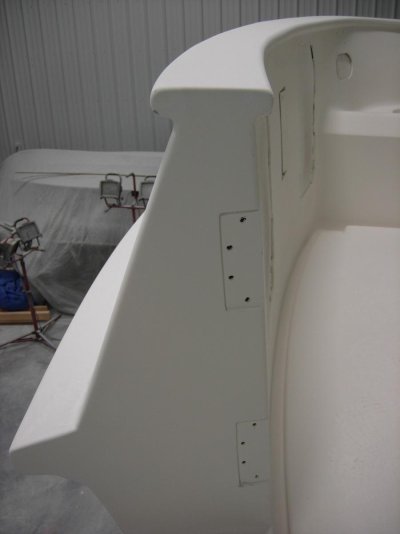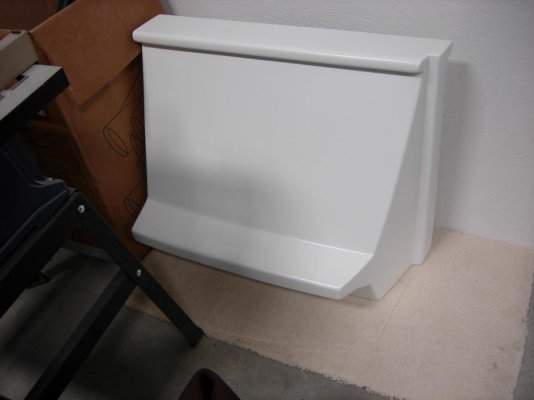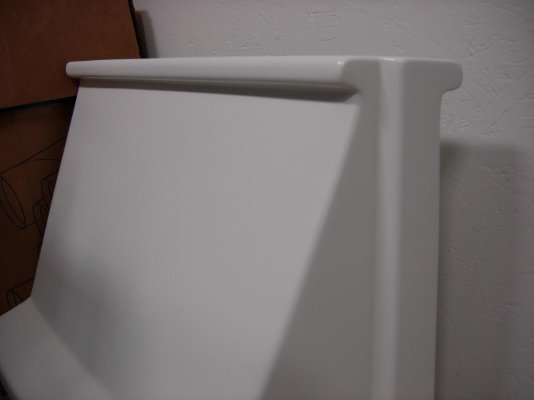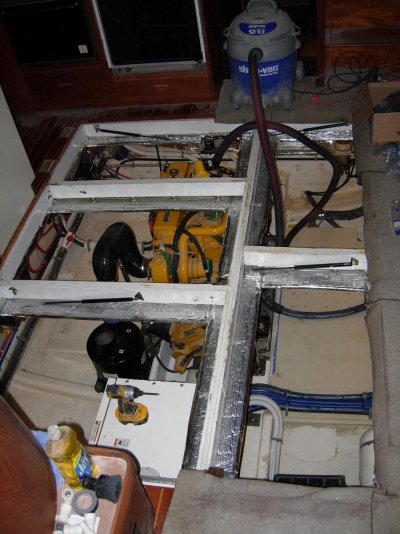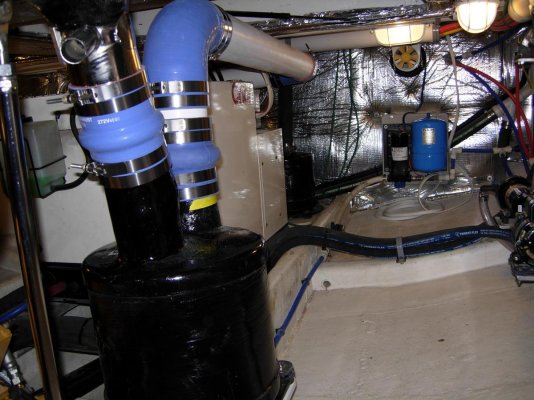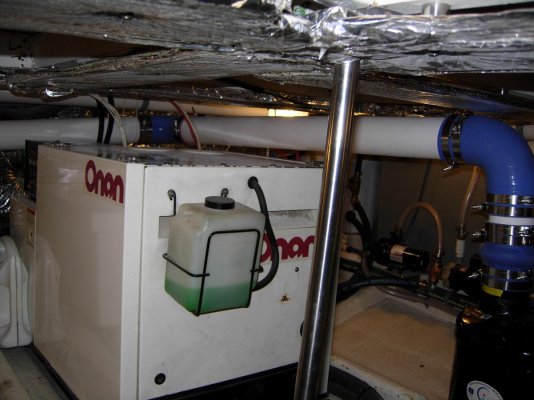My Raw water project:
When I bought the boat, there were 5 below water line plastic seacocks.
1. Engine cooling
2. Generator cooling
3. Generator cooling water after exhaust separator discharge
4. Air conditioning / heat pump raw water
5. Holding tank over board discharge
Two seacocks were in bad locations to access. One was directly under one of the engine room access hatches (easy to step on). Two were located in nice storage spaces that you couldn’t then utilize as the contents would be piled on top of the seacocks, making them inaccessible in an emergency. The first goal was to reduce the number of seacocks. Second was to locate them in easily accessible locations that didn’t waste premium storage space. Third was to relocate the AC pump, strainer and seacock to the engine room. It had been previously located under a bunk in the guest stateroom and was anything but quiet. Forth was to add a raw water wash down pump for anchor retrieval. Fifth was to build a water cooled dummy load for my genset.
The over board discharge seacock for the holding tank was moved from a prime location for storage through the hull of the lazarette to the lowest center point of the transom behind the rudder post. The plastic seacock was replaced with a bronze through bolted seacock tied in to the hull bonding system. All removed seacock holes were dish ground out inside and out. Then the dished areas were filled with a minimum of 4 layers of progressively larger bi-axial cloth circles with West System epoxy. So each hole was filled with 8+ layers of cloth and epoxy. They were then faired and coated with 3 applications of gel coat inside and out.
The genset exhaust water seacock was removed and the hole filled. The 4” engine exhaust, the 1.5” genset gas exhaust, and the 1.5” genset water discharge now all exit through a single 6” exhaust through the transom.
The AC water pump was relocated to the engine room. The seacock was removed and the hole filled. The genset raw water seacock was removed and the hole filled. The 2” plastic seacock for the engine was removed. It was replaced with a bronze 2” through bolted seacock tied into the hull bonding system. What remained was to feed all the raw water system (AC pump, engine, genset, and anchor wash down pump) off this 2” seacock…..and the water cooled dummy load for my genset.
There have been several threads on genset loading and some amount of varying opinion. Most manufactures recommend somewhere between 25 and 50% load all the time to make the genset engine run at proper operating parameters. Not really interested in debating the issue or percentage again. My genset service center recommends a minimum of 25% all the time. Typically that can be accomplished by running the heat / air conditioning whenever the genset was on. Simply, I want to be able to run my 8KW genset whenever I want without turning on systems to provide an adequate load. My solution was to build 2 dummy loads. These are 1,000 watt immersion heating elements built into the raw water cooling system of the genset. Each element is on one power leg of my 220 volt genset and is turned on by flipping a breaker at the electrical panel. If I received $1 per hour for the time I have invested in this project, well it would likely cover another generator. But as I’m sure everybody knows, when it comes to our boats, sometimes you start on a project and in spite of common rational sense you just can’t let it go. So what follows is my obsession; sure hope it works as anticipated.
This is the external strainer that mounts on the hull. The screen is 9” by 4” and will support a 3” seacock flow. Absolutely the best system for keeping debris from clogging your raw water system.

My new 2” seacock and 2” Groco strainer.

If you look carefully, you can see a plastic strainer basket. If you maintain a near constant flow through a Stainless Steel basket, the electrolysis will eat through the basket (my AC strainer basket had corroded in two). Groco recommends this for AC service and the holes are smaller than the outside strainer for finer filtration.

This is my masterpiece or windmill depending on how you want to look at it. The distribution box is made out of ¼” thick 5” square stainless steel box tubing. The end plates are ¼” thick stainless steel plate. All the connections are made with weldable couplings. These are stainless steel rings that are tapped for pipe thread on the inside and can be welded on the outside. All the stainless material, pipe fittings, valves, and hose barbs were sourced from Billy warren and Son for less than $100. There is a welding shop in Crisfield that can make just about anything for a work boat or a yacht….at very reasonable prices. They plasma cut all the parts and holes, TIG welded everything together, and then polished it to an almost mirror finish (8 hours of polishing) (I think $400 total).
Raw water (2”) enters on the left. Engine feed (1.25”) is from the bottom. Genset feed (1”) is from the top valve on the right. AC pump and wash down pump feed (1”) is from bottom valve on right. The top of the distribution box is between 4 and 8” under sea level. So the box has a positive feed pressure.

Bottom of the box has a ¾” mpt pencil zinc that is 4” tall to eliminate electrolysis. The box is also tied to the boat’s bonding system along with the strainer and seacock.

The two 1,000 watt stainless steel immersion heaters were probably the hardest thing to source. They are all Stainless with a 1” mpt. They are used to keep oil in tanks warm during the winter on trucks and equipment in frigid environments. They are made by the largest block heater manufacturer, but for some reason, not well advertised. Cost about $70 each. They are almost the full length of the distribution box.

On top of the box are 2 water heater thermostats set around 90 degrees. In the event that the heat elements accidently get turned on while hooked to shore power with no water flow, the thermostats will turn off the heaters when the water reaches 90 degrees, saving the elements.

The thermostat cover is another Sean custom fabrication. Did I tell you he does really nice fiberglass work?

Here is the transmission cooler mounted on one of my custom built Stainless brackets. What’s note worthy on this is that John Deere wants the gear cooler before the water pump. So the tube bundle inside the heat exchanger needs to be much larger in diameter to maintain high flow volume. I installed a pencil zinc at the bottom of the right side, barely visible.

Here are the wash down pump (on left) and AC pump (on right).

With all the pumps running at full speed, the absolute flow total would be about 58 GPM through the 2” seacock. The Cummins 450 that came out had a flow requirement of 60 GPM through a 2” seacock. My expected peak flow at cruise speed with the genset and AC on will more likely be around 35 to 40 GPM. Wash down pump likely will only be running when the engine is idling, etc. The 2 heating elements will add about 4 degrees of heat to the 6 GPM flow rate of the genset, not an issue.
Ted







